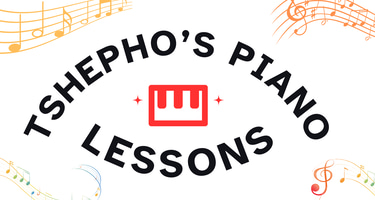Elevate Your Piano Playing with Drop 2 Voicings
TECHNIQUE
2/19/20252 min read
Understanding Drop 2 Voicings
For aspiring pianists seeking to enhance their musical expression, understanding drop 2 voicings is essential. These voicings not only create richer sounds but also allow for a more sophisticated approach to harmony. So, what exactly are drop 2 voicings? In essence, they are derived from four-note chords where the second highest note is dropped an octave. This technique transforms ordinary triads and seventh chords into more colourful, layered versions that are instrumental in jazz and contemporary music.
Constructing Drop 2 Voicings in E♭ Major and Minor
Now that we have a grasp of what drop 2 voicings are, let’s delve into how to construct them specifically for E♭ major and minor chords. For the E♭ major chord, the notes are E♭, G, B♭, and D. To create a drop 2 voicing, you should take the second highest note (G) and move it down an octave. This results in the notes B♭, D, E♭, and G, which you can play comfortably on the piano. Similarly, for the E♭ minor chord, which consists of E♭, G♭, and B♭, dropping the G♭ changes the voicing to B♭, E♭, and G♭, creating a lush but distinct sound.
Applying Drop 2 Voicings in Common Chord Progressions
Once you've mastered the construction of drop 2 voicings, the next step is to apply them in common chord progressions. For instance, a typical progression in E♭ major might include the chords I (E♭), IV (A♭), and V (B♭). Here, using drop 2 voicings for each of these chords can elevate the overall harmonic texture. You might also experiment with sequences such as ii-V-I (F minor, B♭, E♭) to grasp how drop 2 voicings can transition smoothly. By understanding and implementing these voicings, you’ll find that your playing becomes more fluid, and the richness of the chords adds depth to your performance.
Transitioning Between Drop 2 Voicings
To ensure a seamless musical experience, transitioning between drop 2 voicings is key. Here are a few tips to facilitate these transitions: practice common progressions with a metronome to establish a steady rhythm. Furthermore, familiarize yourself with the fingerings involved for each voicing. This will not only enhance your muscle memory but also provide you with a solid foundation for improvisation. Lastly, listen to recordings of professional pianists who utilize drop 2 voicings, as this will inspire creativity and inform your interpretation.
By embracing drop 2 voicings, you can elevate your piano playing significantly. With persistence in practice, you will witness a transformation in your sound, making your music more engaging and expressive. So, start practicing today, and unlock the potential of your piano playing!
